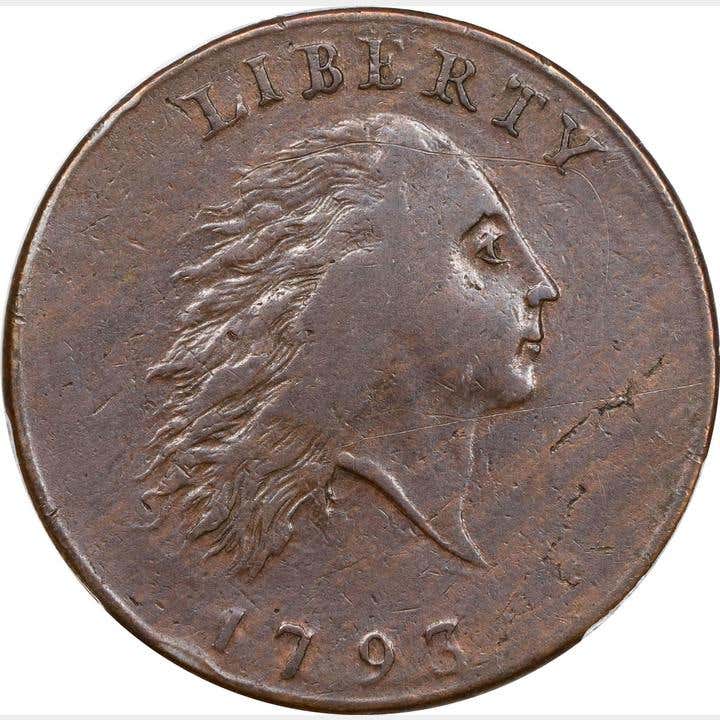Carson City Mint Double Eagle Takes Flight in Heritage’s US Coins Auction
1907 Flat Rim double eagle, 1861 Silver and Minor Proof Set, and 1875 Liberty quarter eagle also among December 12-15 highlights.
An exceedingly rare double eagle from the Carson City Mint will take flight into a new collection when it is sold in Heritage’s December 12-15 US Coins Signature® Auction.
The discovery of gold and silver ore in the Comstock Lode led to the establishment of the Carson City Mint, which opened in 1870 and struck its last coins 23 years later. However, the Nevada branch mint was the subject of much government controversy, particularly because of the competing influences regarding silver mining interests. The Mint’s coin production was suspended from 1886-88 after efforts to close the Comstock’s personal branch mint came as early as the facility’s first few days in operation. Congressman Thomas Fitch, the Representative for Nevada’s at-large district, made what was called a “strong and effective speech” against the Mint’s closing, after which he proposed an amendment to strike from the Appropriations bill the clause that called for the abolishment of the Carso City Mint. Fitch’s defense of the Mint was followed by coining the 1870-CC Double Eagle.
“The 1870-CC Double Eagle, XF45 is a magnificent survivor from a miniscule mintage of just 3,789,” says Todd Imhof, Executive Vice President at Heritage Auctions, “and of those, estimates of the surviving population have ranged from just 40 to 65, making it the rarest gold coin from this historically important Mint, and one of the greatest trophy-level coins of the entire double eagle series. If not for Congressman Fitch’s defense of the Carson City Mint, this coin never would have existed.”
The coin is scarce in any grade, and examples in this condition are even more elusive. None are known in Mint State, and the example offered in this auction is one of just ten graded in 45, with only 12 known to carry higher grades.
Also up for grabs in the auction is the only example of a 1907 High Relief double eagle that earned a PR66 grade and the coveted Star designation that indicates exceptional eye appeal. The 1907 High Relief Flat Rim Double Eagle, PR66★ NGC, that is in play in this event, which features more than 800 lots, is among just 291 examples that NGC has certified as proofs. Of those, just 25 fall into the PR66 grade range, the finest of which — the example offered in this auction — is the lone offering to carry the Star designation. NGC has long certified specific examples of the High Relief issue struck with the Ultra High Relief edge collar as proofs, and PCGS now slabs these coins as specimens. The offered example was displayed at the Museum of Money on Wall Street in Manhattan before its consignment in Heritage’s 2008 Summer FUN auction.
Those are just two of the 125 double eagles in the auction, a selection that also includes, but is not limited to:
- An 1871-CC Double Eagle, VF30 NGC CAC, Winter 1-A
- An 1891-CC Double Eagle, AU58 NGC CAC, Winter 1-A
- An 1851 Double Eagle, MS64 PCGS
One of the genuinely intriguing lots in the auction is an 1861 Seven-Piece Silver and Minor Proof Set PR62 to PR67 PCGS that includes a Cent PR62, a Three Cent Silver PR67, a Half Dime PR66, a Dime PR66 Fortin-101, a Quarter PR66 Briggs 7-E, a Half Dollar PR66 and a Silver Dollar PR67 OC-P2, R.4. The proof silver coinage of 1861 is, overall, scarcer than the immediately following No Motto proof issues. The individual issues are almost universally condition rarities at the upper-grade levels, and the proof Seated dollar of this date especially is a notorious rarity in grades above PR65. The proof Seated dollar is the finest 1861 proof dollar at PCGS. Just 1,000 sets were produced, in agreement with the mintage totals for each 1861 proof denomination listed in the Guidebook. Still, Walter Breen suggested that probably 300-400 “sold as sets, others as individual coins, the remainder … melted in 1862.”
Bidders will have a chance to land one of the finest examples of a 1924-S Double Eagle, MS65 NGC. Although nearly a decade removed from the 1933 Gold Recall mandated by President Franklin D. Roosevelt, the 1924-S was heavily melted in the mid-1930s. Of the 2.9 million struck, most remained in government control by 1933. Approximately 250,000 were “put out” to the Federal Reserve banks, but few ever made it into domestic commerce; the majority eventually returned to the Mint and were melted down. It is believed that about 1,100 examples of this date remain. Most are in MS64 or lower grades, making Gem-quality MS65s like the one offered here an unquestioned rarity.
The auction includes three 1875 Liberty Quarter eagles, one of which — an 1875 Liberty Quarter Eagle, MS60 — is one of the few Mint State examples from an original mintage of just 400, the second-lowest in the Liberty Head series.
One lucky bidder will end up with one of just four known examples of a 1724 Hibernia Halfpenny Pattern, PR40. The other three examples of the coin known as the “Neptune Reverse” pattern — a moniker earned because of the trident on the reverse — are respectively pedigreed to Farouk-Norweb-Martin, Garrett-Roper, and Robison.
Also in play is an 1893-S Morgan Dollar, AU55 PCGS CAC, a beautiful example of a coin that appears on more collector want lists than any other date-mintmark combination in the series. The demand stems partly from the fact that the reported mintage of 100,000 coins was the lowest in the series, and the number released is thought to be even smaller. In addition, unlike many other low-mintage issues, no quantities of 1893-S dollars were released in the 20th century. The coin offered in this auction is one of just 46 graded in 55 (1 in 55+), with 53 carrying finer grades; CAC: there are eight graded in 55 and 12 finer.
An 1856 Half Dollar, PR65 Cameo PCGS CAC, was struck two years before the Mint officially marketed proofs to the public. This example is one of just 20-30 proofs estimated to exist from these distinctive proof dies. It is one of just two examples graded in 65 Cameo, with just one other graded finer.
Images and information about all lots in the auction can be found on the website.
You may also like:






